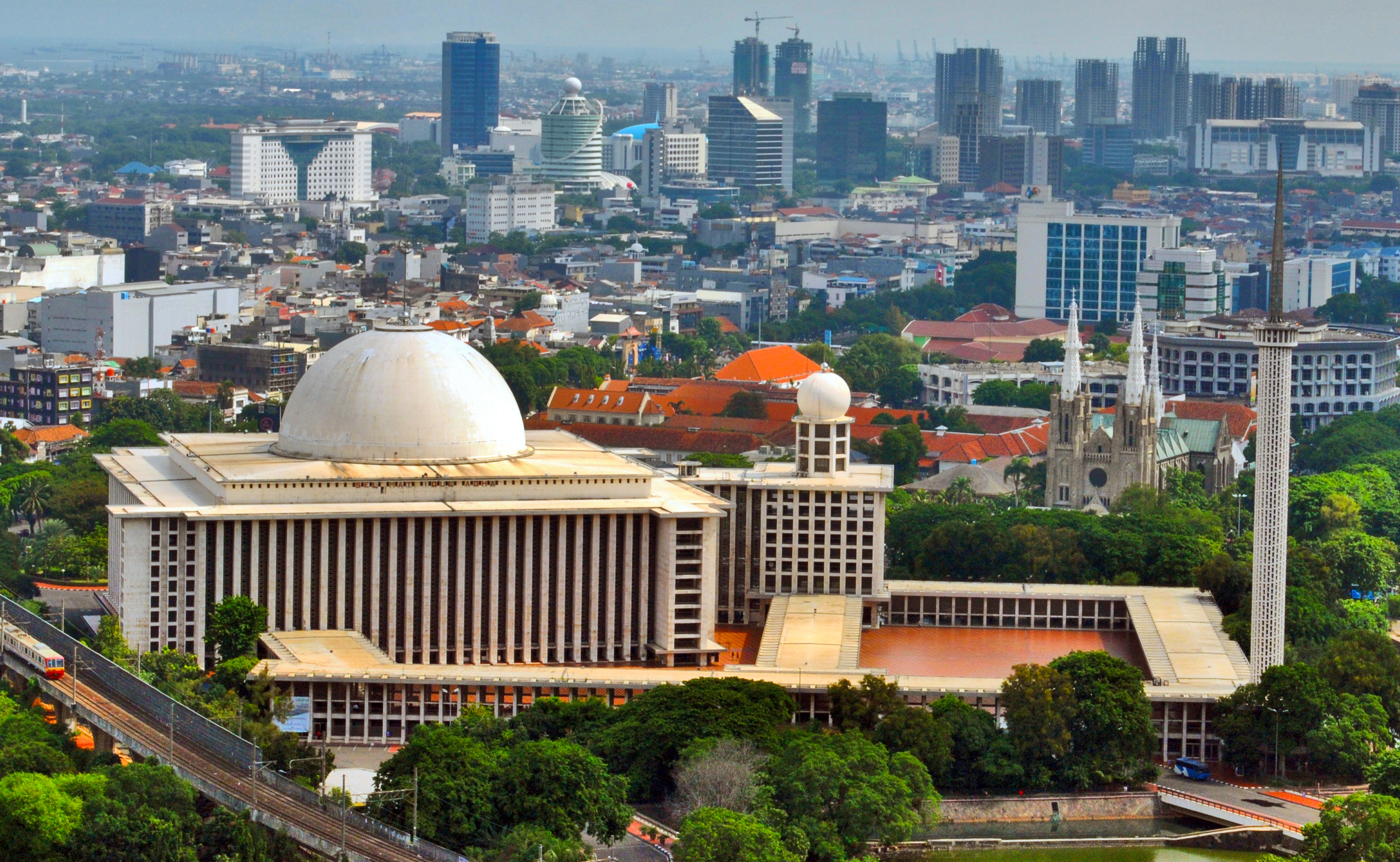Southeast Asia is home to a rich tapestry of cultures and religions, with Islam being the most practiced faith in countries such as Indonesia, Malaysia, and Brunei. Reflecting both religious devotion and architectural prowess, many of the region’s largest mosques serve not only as places of worship but also as cultural and social landmarks.
These grand structures symbolize the historical depth and modern vitality of Islam in the region. From the world’s largest Muslim-majority country to nations where Islamic architecture coexists with other faith traditions, the mosques of Southeast Asia stand as majestic expressions of faith and community.
Istiqlal Mosque - Jakarta, Indonesia

The Istiqlal Mosque in Jakarta is the largest mosque in Southeast Asia and one of the largest in the world. Located in Indonesia’s capital, the mosque was inaugurated in 1978 and can accommodate over 120,000 worshippers. Designed by architect Frederich Silaban, a Christian of Batak descent, the mosque represents Indonesia’s national identity and religious tolerance.
Istiqlal, meaning “independence” in Arabic, was built to commemorate Indonesia’s liberation from colonial rule. The mosque’s modernist design features a massive central dome, elegant marble interiors, and an imposing minaret that towers 96 meters high.
It stands directly opposite the Jakarta Cathedral, symbolizing religious harmony in the heart of the city. Beyond its spiritual role, the mosque hosts various public events and is a central venue for Islamic celebrations such as Eid al-Fitr and Eid al-Adha.
National Mosque - Kuala Lumpur, Malaysia

Masjid Negara, or the National Mosque of Malaysia, is one of the most iconic religious sites in Southeast Asia. Located in the capital city of Kuala Lumpur, it was completed in 1965 as a symbol of the country’s post-independence aspirations. The mosque can accommodate up to 15,000 worshippers and is renowned for its modernist architectural style, which blends Islamic motifs with contemporary elements.
Its most distinctive features include a 73-meter-high minaret and a striking umbrella-like roof that symbolizes the tropics. The mosque's design incorporates geometric patterns and calligraphy, echoing the principles of Islamic art while embracing Malaysia’s multicultural identity. Masjid Negara is not only a place for prayer but also a national monument that reflects the spiritual foundation of the nation.
Sultan Omar Ali Saifuddien Mosque - Bandar Seri Begawan, Brunei

In the tiny but oil-rich nation of Brunei, the Sultan Omar Ali Saifuddien Mosque stands as a testament to Islamic architecture and royal patronage. Named after the 28th Sultan of Brunei, the mosque was completed in 1958 and is located in the capital, Bandar Seri Begawan.
Though it accommodates fewer worshippers than some of its regional counterparts, the mosque’s architectural elegance makes it one of the most photographed landmarks in Southeast Asia. Built on an artificial lagoon and surrounded by landscaped gardens, the mosque features white marble walls, golden domes, and a ceremonial barge.
Its minarets and interior decor are influenced by Mughal and Italian architecture, blending international styles with traditional Islamic elements. The mosque serves as a spiritual center and a symbol of Brunei’s strong Islamic heritage and the Sultan’s role as the defender of the faith.
Baiturrahman Grand Mosque - Banda Aceh, Indonesia

The Baiturrahman Grand Mosque in Banda Aceh holds a special place in the hearts of Indonesians, not just for its beauty but also for its resilience. Originally built by the Dutch in the late 19th century during their colonial administration, the mosque has undergone multiple renovations and expansions over the years. Today, it can hold over 25,000 worshippers.
During the devastating 2004 Indian Ocean tsunami, the mosque miraculously survived while much of the surrounding area was destroyed. This led many to view it as a symbol of hope and divine protection.
Architecturally, Baiturrahman features Moorish and Mughal influences, with multiple black domes and towering white minarets. The mosque plays a central role in religious life in Aceh, the only province in Indonesia governed by Islamic law.
Grand Mosque of Central Java, Semarang - Indonesia

Another striking mosque in Indonesia is the Grand Mosque of Central Java, located in Semarang. Completed in 2006, it can accommodate around 15,000 worshippers and is notable for its unique design, which combines Javanese, Arabic, and Greek architectural elements.
The mosque complex includes a central prayer hall with a large dome and six hydraulic umbrellas inspired by those at the Prophet’s Mosque in Medina.
The mosque also houses a 99-meter-high tower representing the 99 names of Allah, which offers panoramic views of the city and serves as a beacon of Islamic learning and culture. As a modern addition to Indonesia’s religious landscape, the mosque symbolizes the blend of tradition and innovation that characterizes the country’s approach to Islamic practice.



















